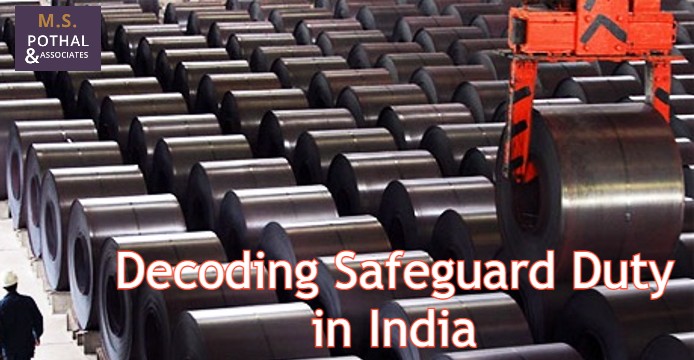The Safeguard measures are based on decisions taken by the WTO in times of crisis. The current safeguard measures provide protection to the domestic industry from the injurious effect of any sudden or unforeseen surge in imports.
It is notified that a Safeguard Tariff will be levied on all imports of Rice (Wholesale) from 08, June 2018 to 07.June 2019. During this period, importers of Rice (Wholesale) will have to pay 25% extra import duty on top of the basic customs duty liveable. This levy of extra duty is called Safeguard Duty in India, and only Rice (Wholesale) imports are being levied with this additional safeguard duty provision.
What is safeguard duty?
Safeguard duty is an import duty generally imposed by countries to restrict imports, especially if these imports are causing serious damage to their local industry. In India, this import duty is known as Safeguard Duty in India. The Safeguard Duty was introduced with the intention of protecting domestic industries from the dumping (or export subsidies) of a foreign country.
In other words,
Safeguard Duty is a trade remedy measure to protect domestic industry when there is a surge in imports. It came into effect in the year 2017, and apart from this, it is also called an emergency duty. In India, it was introduced through section 11 A of the Customs Tariff Act 1975 (CTA 1975), which was inserted by the Finance Act 2016.
The main objective of Safeguard Duty is to safeguard the domestic industry in the event of serious injury or destruction caused due to increased import competition. This duty is usually imposed on industries or an individual industry or an industry-affected region that is facing a surge in imports.
Safeguard Duty in India is imposed in case there has been a surge in imports of products originating outside India, which are like or directly competitive with products made or manufactured in India. The imposition of Safeguard Duty takes place through an order passed by the Central Board of Excise and Customs (CBEC) under Section 11A of the CTA 1975.
FSSAI had mandated that the product should not be sold below the Maximum Retail Price (MRP) on justified grounds. The product, in the present case, was sold below the MRP.
The first question that needs to be answered is whether a malt beverage like beer can be categorized as an essential commodity under a Free Trade Agreement (FTA).
Also Read:- keep-these-things-in-mind-when-hiring-tpm-consultants
If one recalls, in July 2014, the government imposed a Safeguard Duty in India of 100% on the import of stainless steel products from China. The product was categorized under Article 20(1) (e) of the General Agreement on Tariffs and Trade (GATT 1994). However, the same product is not mentioned in Schedule 1 of the Agreement on Safeguard between India and Mercosur.
Thus far, no court or authority has adjudicated upon the issue of categorization of beer as an essential commodity. This being an issue of first impression, it stands to be adjudicated upon by the judicial authorities after due process.

.jpg)

Comments
Post a Comment